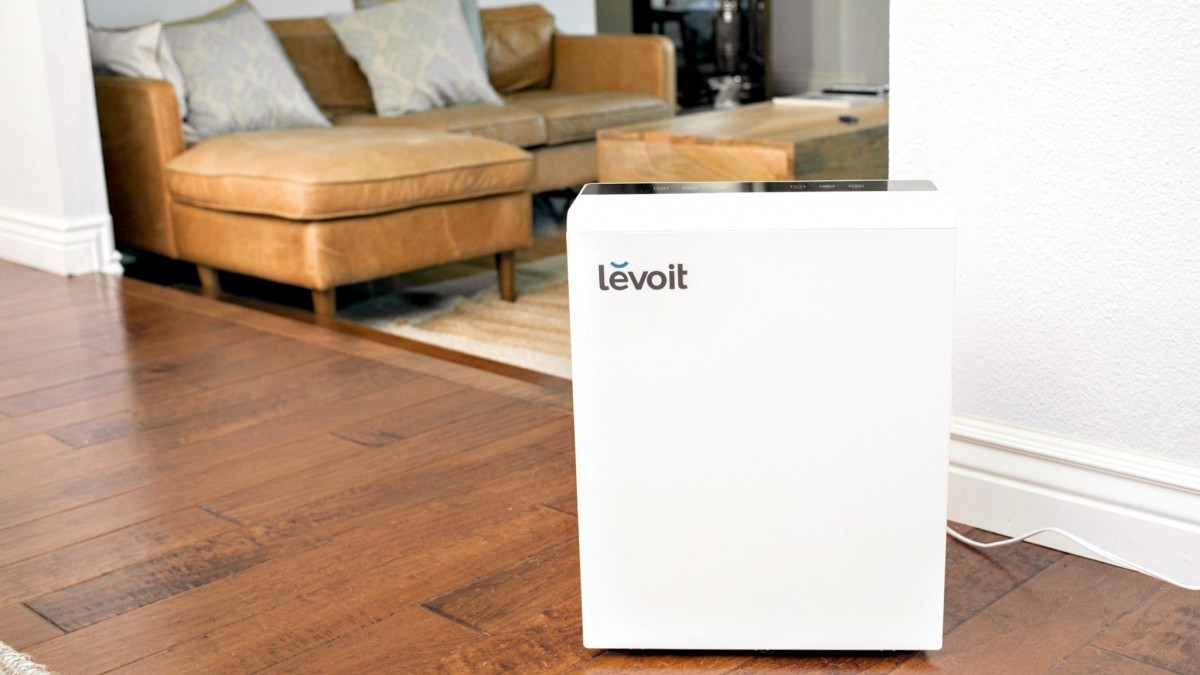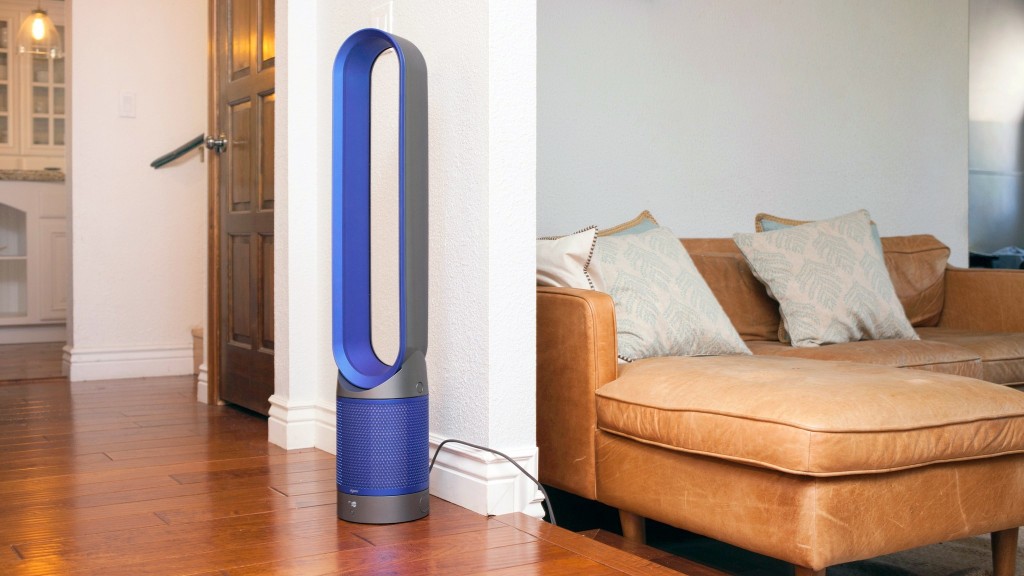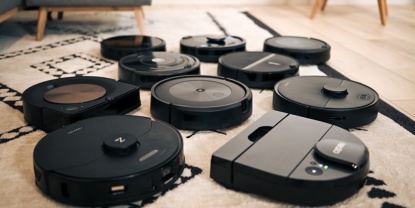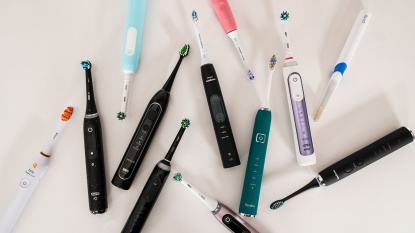Our lungs have a lot to contend with these days between seasonal allergies, wildfires, mold, and general air pollution. Air purifiers are a simple and effective way to improve the air quality in your living and workspaces. They work by removing hazardous particulates from the air, which in turn, lets you breathe a little easier. Choosing the right one, however, can be a daunting task. In this article, we outline who will and will not likely benefit from an air purifier and provide a step-by-step guide for choosing the right model. We hope our buying advice will clear the air on which model will suit your needs and budget best.
There are a number of models on the market that use ionizers to clean the air. Ionizers essentially emit charged particles that stick to the other particles you'd like to remove from the air, making them easier to catch in a filter. Some of these machines have been found to emit ozone, which can be a very strong lung irritant. Many manufacturers today are advertising ozone-free ionizers, but at this point, we would tend to err on the side of caution and go with a non-ionizing model instead. A few of the models we tested include optional ionizers. However, we didn't find that the ionizers increased their performance significantly, so we kept all of the ionizers turned off for our final rounds of testing.
Some other models use UV light to kill microorganisms in the air. Here again, we would generally err on the side of caution and not use this feature. The EPA doesn't think small household purifiers with UV lights are effective at killing microorganisms, and the UV light themselves can also sometimes be a source of ozone production.Who Can Air Purifiers Help?
Unfortunately, no definitive scientific studies state that the portable style air purifiers we tested improve your health. However, they are proven to reduce air particulate concentration, which can often improve day-to-day quality of life for certain subsets of the population.
Airborne Allergen Sufferers
Air purifiers truly shine when it comes to combating airborne allergens. Pollen and dust are some of the most common airborne irritants. Air purifiers are particularly effective at removing these particulates from the air. Again, there is no comprehensive study proving the effectiveness of air purifiers decreasing allergy symptoms, but there is significant anecdotal evidence that points to their effectiveness. Just remember, allergens can also settle into your carpet, so a good vacuuming is always helpful as well.
Those with Respiratory Afflictions
The symptoms of most respiratory ailments, like asthma and COPD, can be aggravated by particulates in the air. A good air purifier can reduce airborne particulates in your home and possibly mitigate some of your symptoms.
Wearing a useful and well-fitted face mask from our face mask review can also help keep you breathing well and avoid the irritants and germs that can cause difficulty. It is portable and easy to use as an everyday part of your healthy breathing routine.
Who Air Purifiers Likely Won't Help
While purifiers are great at filtering particles out of the air, there are certain things they can't do or do poorly.
Those Looking to Control Odors
Odors are generally caused by molecules, which are far too small to be caught by a filter. Many purifiers, including most of the models we tested, have activated carbon filters (in addition to a standard air filter) to get around this problem. Activated carbon creates a chemical attraction to certain airborne molecules and acts like a sponge. However, in our testing, none of the activated carbon filters were effective at reducing odors. Though many purifiers brought the airborne particulate counts close to zero, the room still smelled like smoke. Opening a window was much more effective at getting rid of the odor.
Those Concerned About Germs
Many people buy air purifiers hoping they will remove pathogens and bacteria from the air. There are a few problems with this. One is that most bacteria and pathogens can pass through even the best air filters. Another is that things like mold and bacteria tend to stick to surfaces and thus never make their way through an air purifier.
Some purifiers attempt to rectify the first problem by using UV light to kill any microorganisms that pass through the air purifier. Unfortunately, the effectiveness of this technology has only been proven in large-scale, industrial units used in hospitals. These units generally exchange air slowly, giving the UV light time to work. When it comes to small, household units, the effectiveness of this technology is questionable. The Environment Protection Agency has this to say about home UV purifiers, “Bacterial and mold spores tend to be resistant to UV radiation and require more light or longer time of exposure, or both, to be killed.” Also, there is always the chance that a UV light could contribute to ozone production, which is a lung irritant.
Those Concerned About VOCs
If you're most concerned about volatile organic compounds (VOCs) or other gaseous pollutants, most air purifiers will make only a small difference at best. Here again, it is an activated carbon filter that would remove such compounds, but one filter won't catch every type of gaseous pollutant. Even the Environmental Protection Agency states that, “…gas-phase filters may remove a portion of the gaseous pollutants and some of the related hazards, at least on a temporary basis. However, none are expected to remove all of the gaseous pollutants present in the air of a typical home.” There is some circumstantial evidence that very large carbon filter can be fairly effective, but when it comes to VOCs and gaseous pollutants, it is much better to try and remove or mitigate their source than rely on an air purifier.
Choosing the Right Air Purifier
If you've made it through the first part of this article thinking that an air purifier might be useful for you, the following step-by-step guide will help you choose the perfect model.
Step 1: Do You Need True HEPA?
There is a somewhat convoluted and confusing rating system for air purifier filters, and to make matters more confusing, there isn't a generally accepted governing body that certifies consumer-grade air filters. We go more into the nitty-gritty of this topic below, but the bottom line is this: we've found that filters rated as True HEPA generally perform a bit better than filters simply labeled as HEPA or HEPA type. Therefore, if you suffer from a respiratory affliction, we would likely opt for a True HEPA filter (though we would still implore you to consult a healthcare professional). If you're an allergy sufferer, there's a good chance a simple HEPA type filter would be just as effective, as allergen particles are generally larger and easier to filter.
Step 2: Consider Room Size
You'll want to make sure that you get a purifier large enough to effectively clean the air in whatever room you'll be using it in. Air purifier capacity is rated by clean air delivery rate (CADR). You can read more about CADR below, but the general rule of thumb is that you want a CADR that is at least ⅔ of your room's size in square feet. So if you have a 300 square foot room, you'll want a CADR of at least 200. This rule assumes standard eight-foot ceilings, so if you have especially high ceilings, you may want a higher CADR.
Step 3: Consider Operating Costs
Filters and electricity aren't free, so there will be an ongoing operating cost associated with your purifier. You can use our estimated operating cost figures to make sure you find a model that will fit your budget.
Step 4: Consider Noise
You'll likely be spending a lot of time next to your purifier while it is running, so you'll want to make sure the noise it makes isn't going to annoy you. None of the models we tested were too loud, nothing that a few clicks up on the TV volume can't drown out, but some were much more noticeable than others. You can use our noise ratings as a guide.
Background Information and Terminology
Here we will dive into the details of some purifier-related terminology, in case you want to know what's behind all those numbers and ratings.
True HEPA vs. HEPA Type
HEPA refers to a genre of filter and stands for High-Efficiency Particulate Air (filter). The accepted standard for a HEPA filter is that it must be able to filter out 99.97% of particles in the 0.3-micron size range. That 0.3-micron size represents the hardest particles to filter, as larger ones easily get caught in the fibers of a filter, while smaller ones have so little inertia that things like static charge and buffeting air make it hard for them to find their way through the filter.
We say this is the accepted standard rather than certification or requirement because there currently is not a widely accepted governing body that certifies consumer-grade HEPA filters. This has led to many companies claiming that their filters are “True HEPA” to assure consumers that the filters comply with the accepted standard. Yes, this is clearly a marketing ploy and should be taken with a grain of salt, but in our experience, “True HEPA” filters have generally performed better than filters labeled simply as “HEPA” or “HEPA Type”, presumably because companies really pushing the “True HEPA” moniker have internally tested their filters and believe they will stand up to scrutiny. So, based on our experience, all other things being equal, we would rather use a True HEPA filter, but it is by no means a guarantee that filter is better than one without the “True” prefix.
This information can be confusing; thankfully, there is a consumer-level certification for air purifiers that is governed by an independent body, clean air delivery rate (CADR). CADR is a bit harder to understand, as it certifies the amount of clean air pumped into a room rather than the specific efficiency of a filter, but it does at least provide a comparable and certified number. More on that below.
CADR
CADR, or Clean Air Delivery Rate, is a specification that is meant to measure the amount of clean air an air purifier can pump out and is based on independent testing conducted by the Association of Home Appliance Manufacturers (AHAM). The test essentially involves running the purifier inside a room with a volume of 1008 cubic feet for 20 minutes and comparing contaminant concentration before and after. Three scores are awarded after this test, one for tobacco smoke (0.09-1 micron), dust (0.5-3 micron), and pollen (5-11 micron). However, most models score the same or very similar in all aspects, so the CADR is often reported as a single number.
CADR numbers essentially correlate to the amount of clean air a purifier can pump out each minute. So a purifier with a CADR of 300 is able to produce 300 cubic feet of clean air every minute (more precisely, it achieved airborne particulate concentrations within that 1008 cubic foot room equivalent to adding 300 cubic feet of clean air every minute).
Generally, it is recommended that you use a purifier that has a CADR that is at least ⅔ the square footage of the room you would like to use it in (for example, a 150 square foot room wants a CADR of at least 100). Obviously, there are a number of confounding factors like how much new air is flowing into your room, significant sources of contaminants, or very high ceilings that would necessitate getting a purifier with a larger capacity, but the ⅔ rule is a good place to start when considering what CADR you need.








